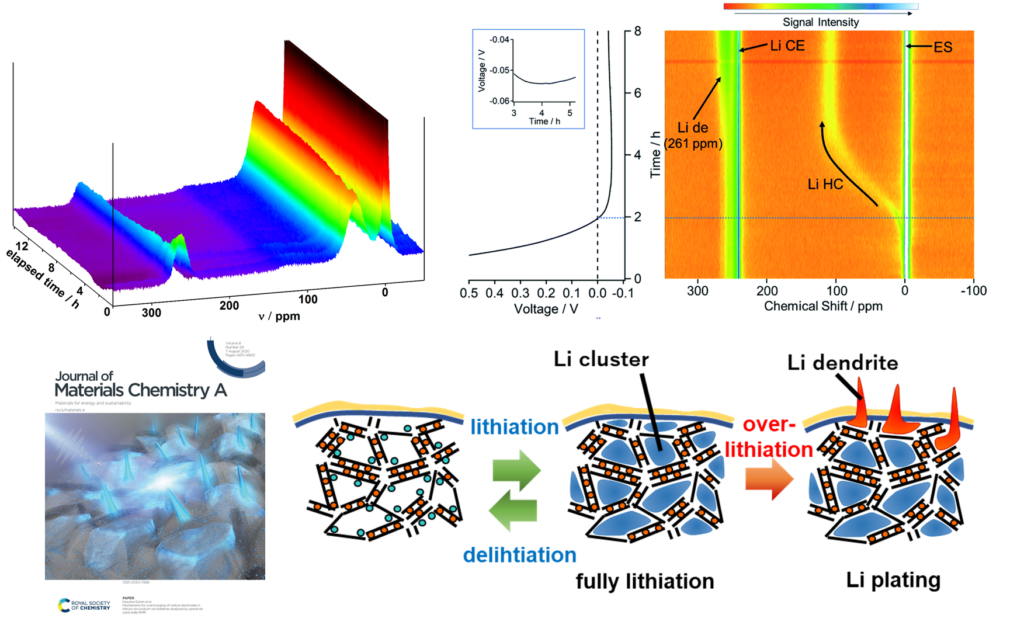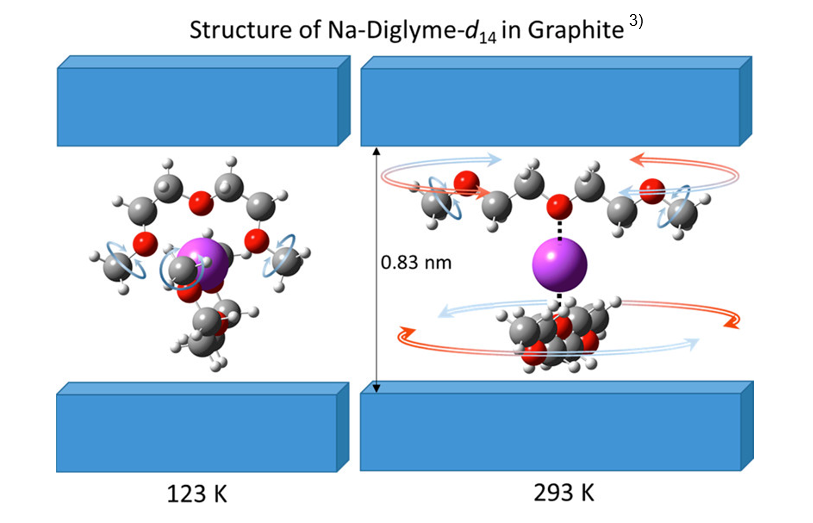Research
“Reaction mechanism of lithium and sodium in electrode materials for next generation secondary batteries”
Lithium ion batteries (LIBs) are commonly used as indispensable energy storage systems for consumer electronics and vehicles. Sodium insertion materials have also attracted much attention for use in sodium ion batteries (NIBs), which are anticipated as a favorable alternative to LIBs because of their abundant resources and comparable electrode potential to that of LIBs. For LIB and NIB development, elucidating the states of the lithium and sodium ions and the charging–discharging mechanism of the electrodes is indispensable. We are investigating the states of lithium and sodium in several electrode materials such as hard carbon, phosphorous, and layered 2D materials using 7Li and 23Na SSNMR (including in situ and operando measurements) to develop next-generation secondary batteries. Our research is aimed at developing methods to analyze the structures of electrodes and the states of lithium and sodium in batteries, and to reveal lithium and sodium reaction mechanisms in electrode materials.

In situ and operando NMR analyses of lithium ion cells (upper left)1),(upper right)2),An image of dendrite deposition (Inside front cover)(lower left)2)A model of lithiation/over lithiation – delithiation of non-graphitizable carbon electrode (lower right)2)
1) K.Gotoh et al., Carbon (2014). 2) K.Gotoh et al., J. Mater Chem. A (2020).
“Intercalation chemistry of inorganic layered compounds”
Inorganic layered materials such as graphite intercalated compounds (GICs) are anticipated for several applications such as electrochemical devices, catalysts, superconducting materials, and precursors of thin film materials. We are studying the syntheses and properties of new GICs and layered materials intercalating alkali metal cations (Li+, Na+, or K+) and several organic molecules, which are anticipated for use as electrode materials or catalysts. The structures and dynamics of intercalant molecules are investigated using X-ray diffraction and SSNMR to elucidate the interaction between intercalants and host materials. These analyses are crucially important for understanding the intercalation chemistry of new materials and the diffusion properties of alkali metals in 2D layers.

3) K.Gotoh et al., J. Phys. Chem C (2016).


